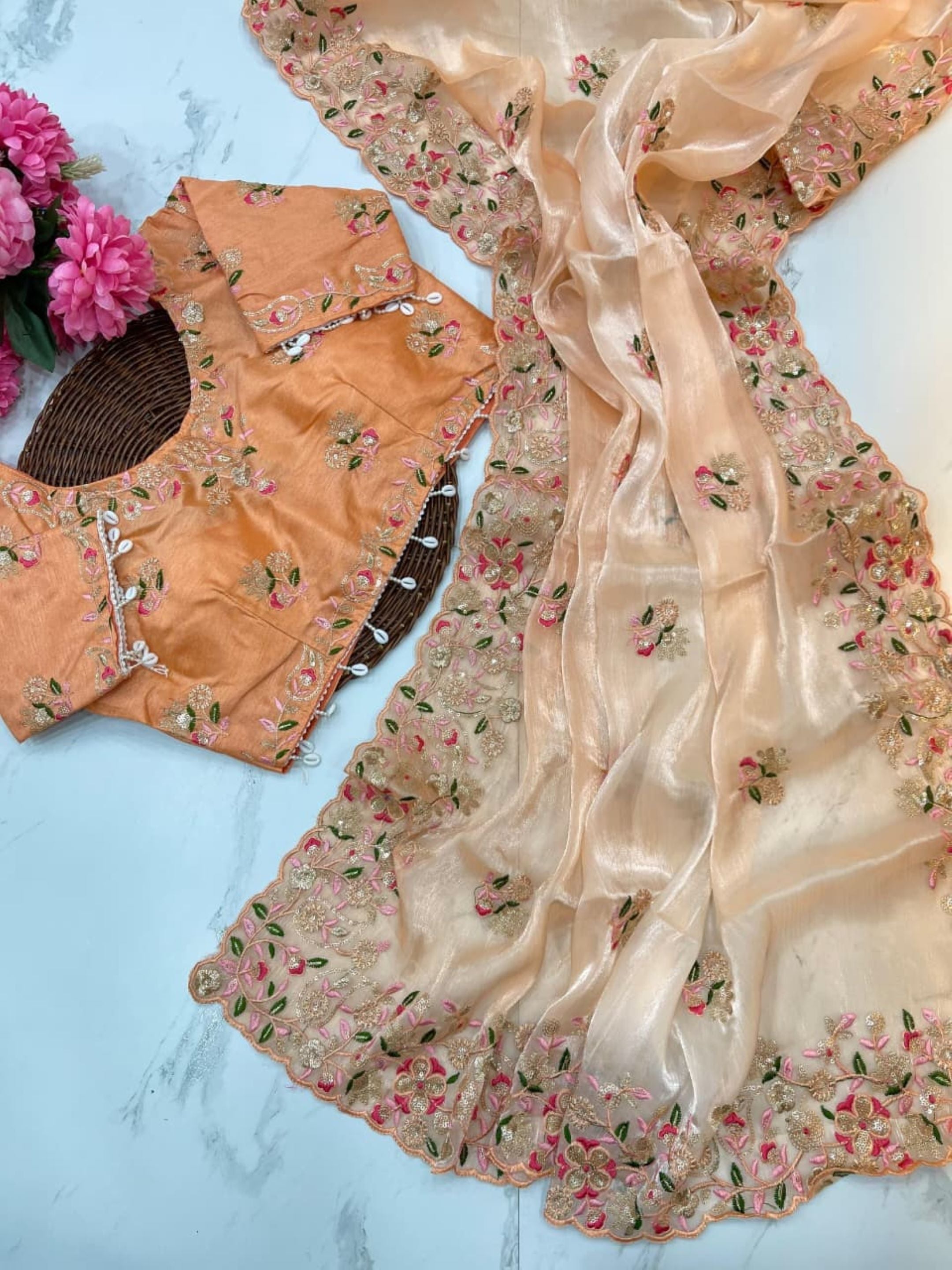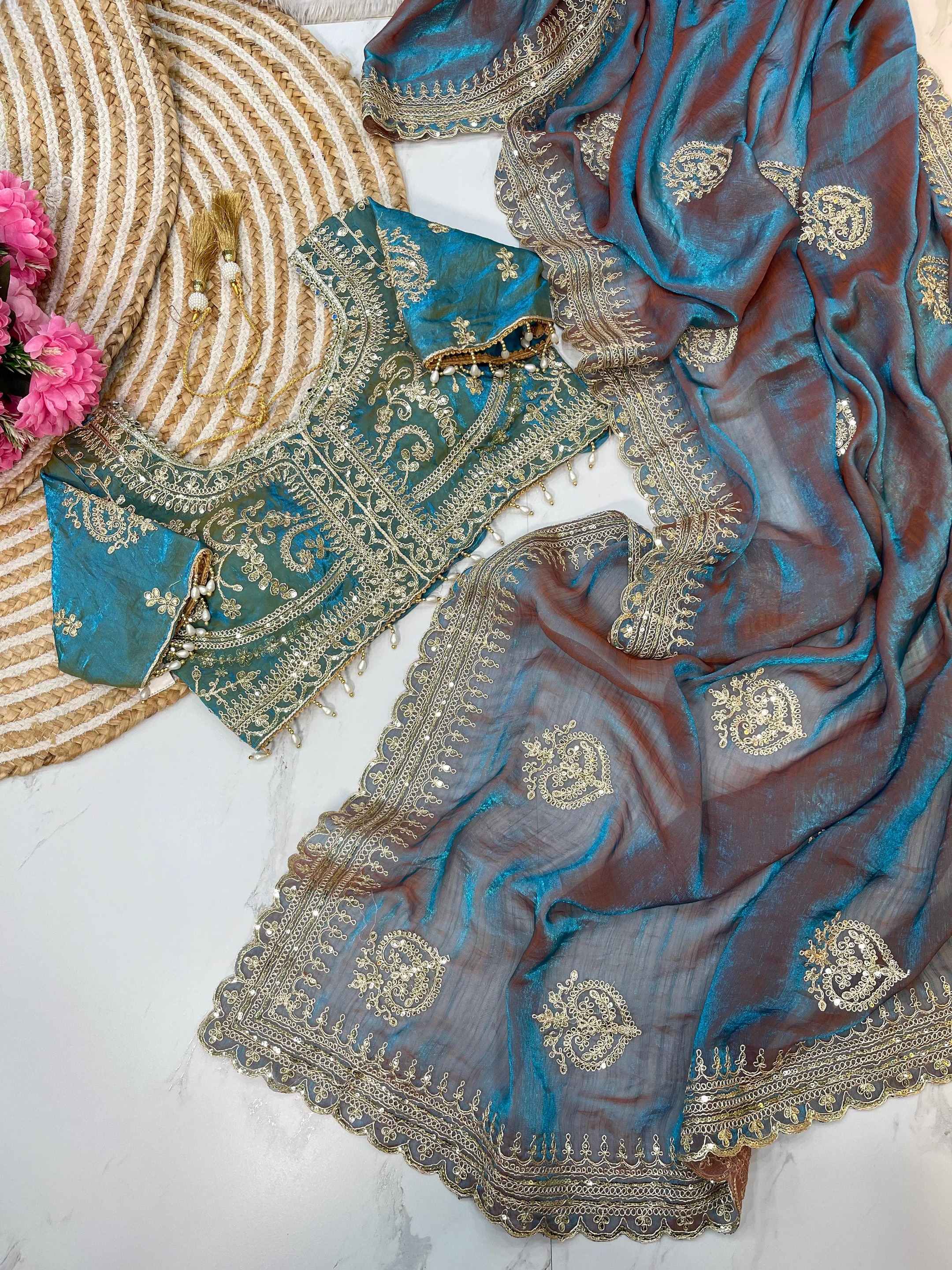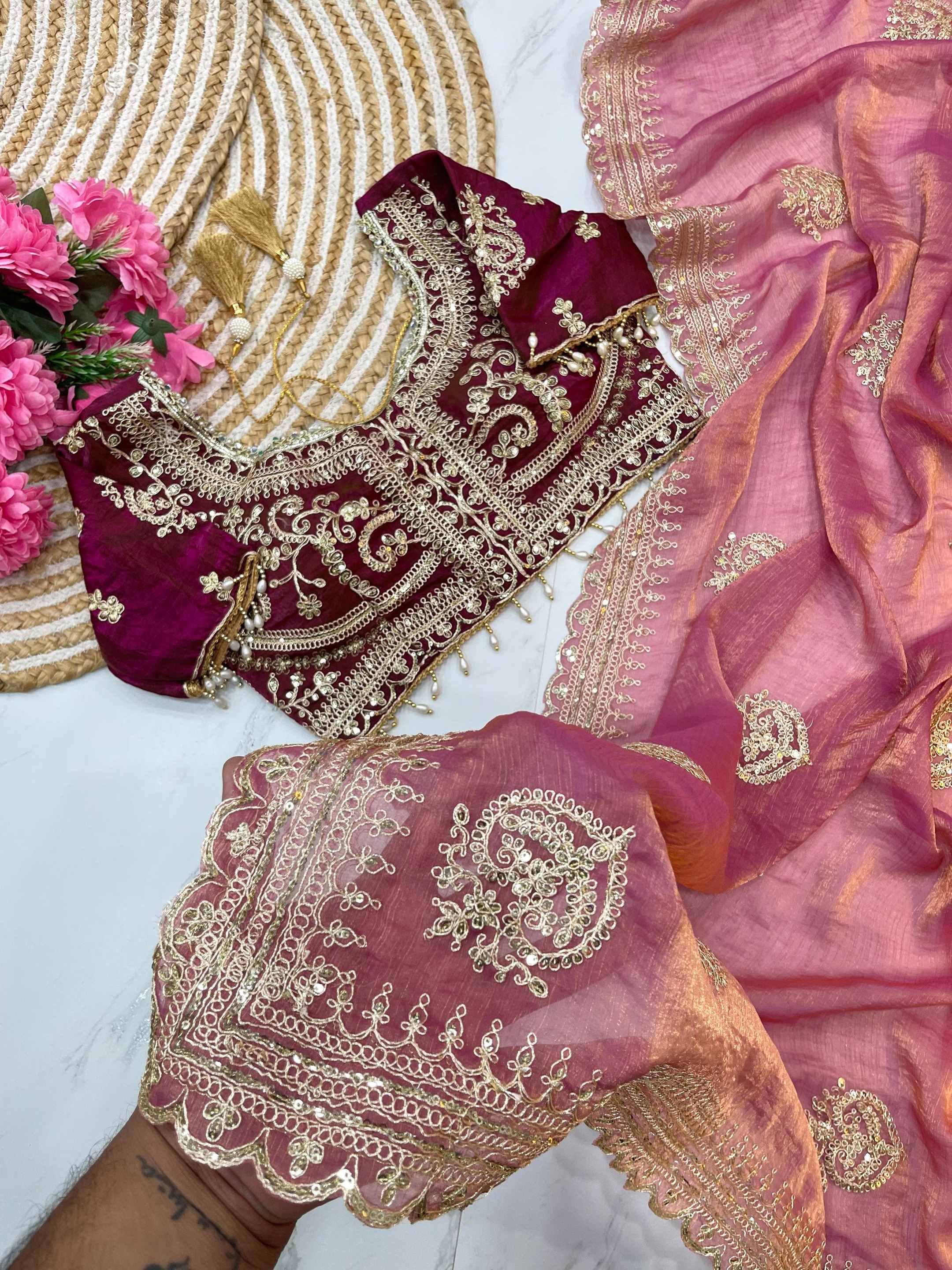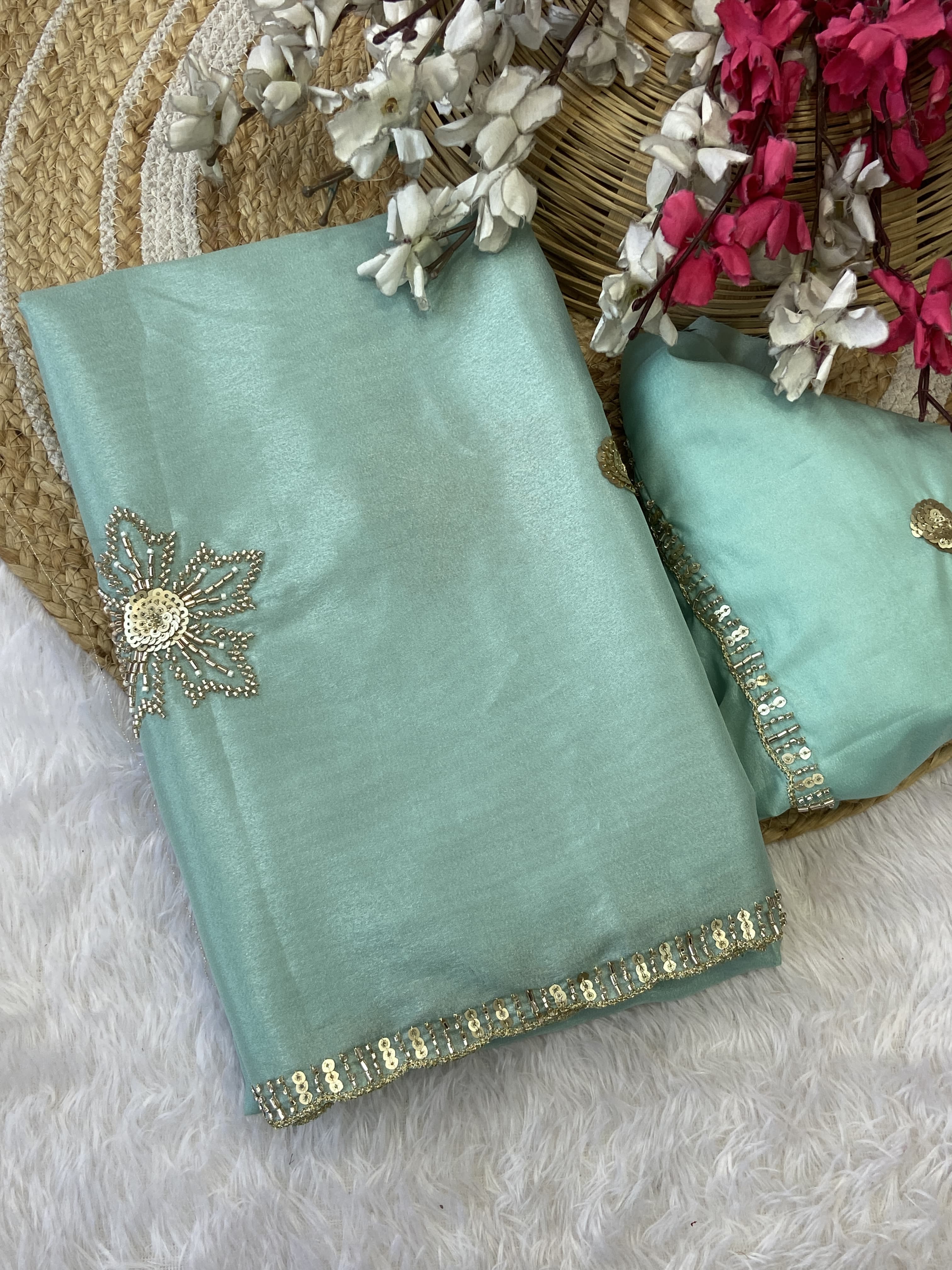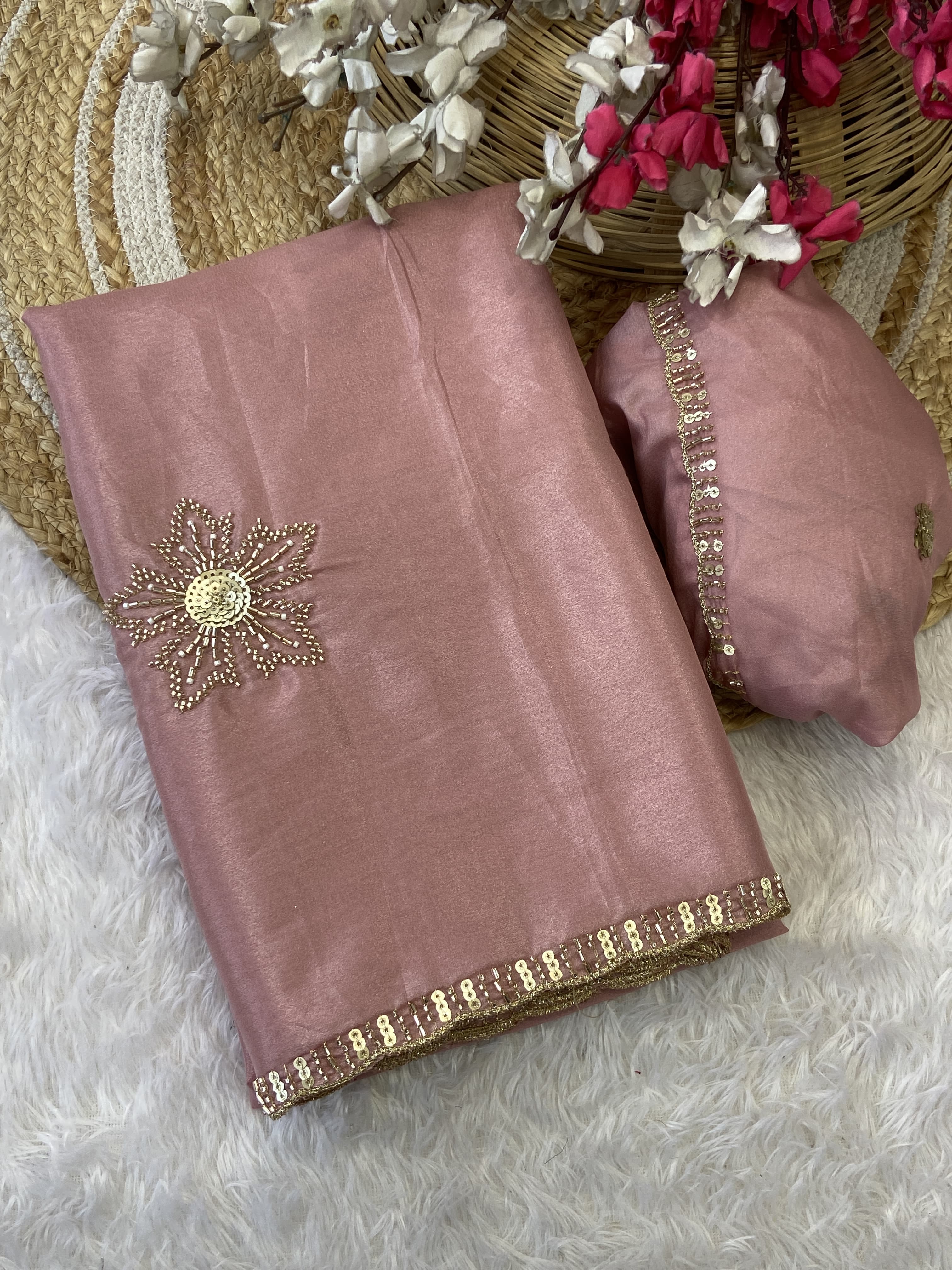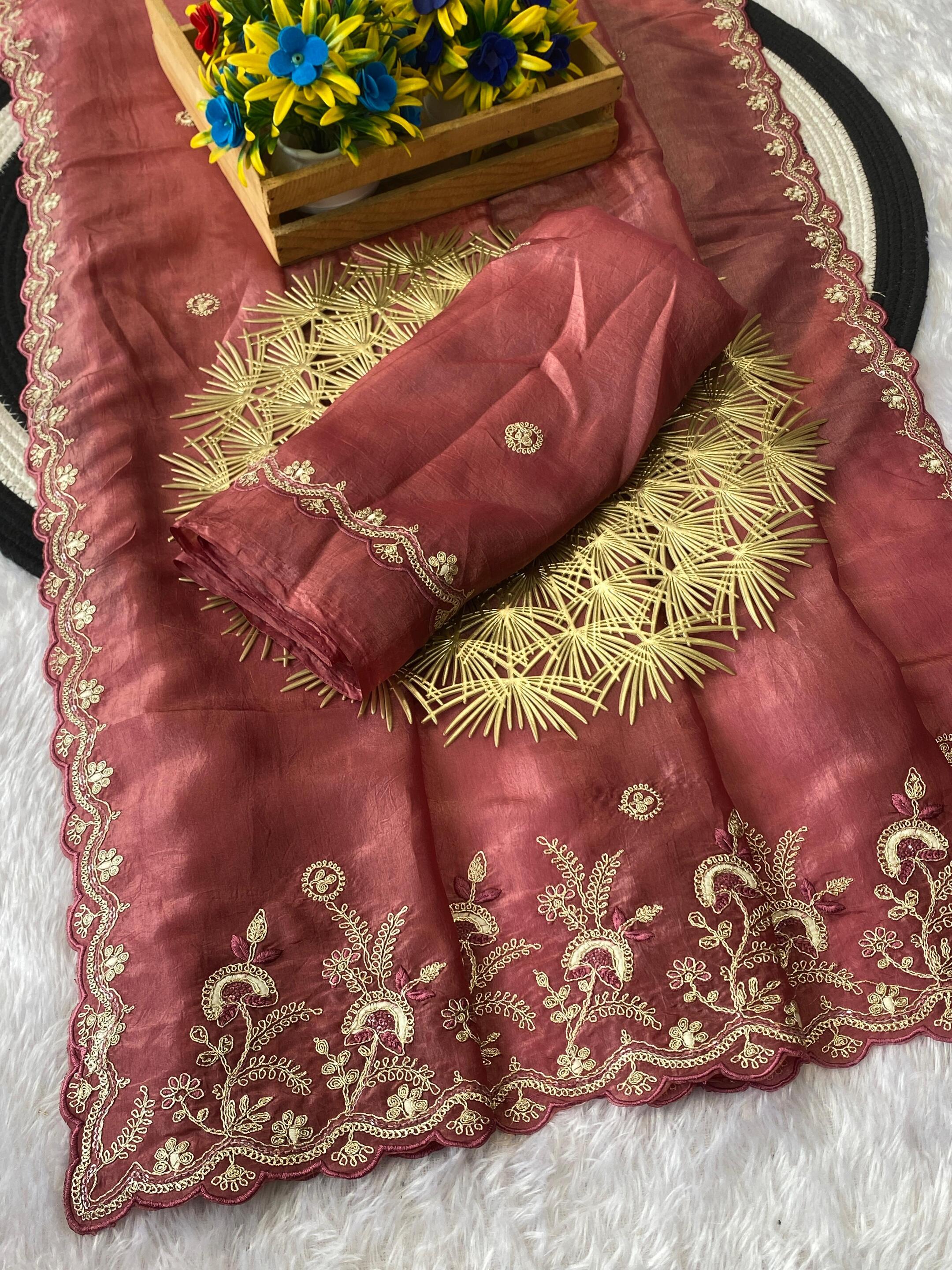
Saree Vs Lehenga: A Tale of Two Drapes

In the vibrant tapestry of Indian fashion, two exquisite garments stand out: the saree and the lehenga. While both represent elegance and tradition, they have distinct characteristics that set them apart. Let’s delve into the nuances of these timeless pieces.
The Saree: A Timeless Classic
The saree is a quintessential Indian attire which is a long-unstitched cloth wrapped around the body. It typically consists of three parts: the pallu, the body and the petticoat. The pallu often the most ornate part is draped over the shoulder. The body is wrapped around the waist and the petticoat provides a foundation.
The Lehenga: A Regal Ensemble
The lehenga, on the other hand, is a three-piece ensemble comprising a choli, a lehenga skirt and a dupatta. The choice is a fitted blouse often embellished with intricate embroidery or sequins. The lehenga skirt is flared and can be made from fabrics such as chiffon, velvet and silk. The dupatta is a long scarf that can be draped into different styles.
Key Differences
-
Drape and Fit
The saree’s drape is fluid and graceful allowing for different styles. The lehenga with its structured skirt offers a more defined silhouette.
-
Occasion
Both sarees and lehengas can be worn for various occasions but lehengas are often associated with more formal events like weddings and festivals. Sarees on the other side can be dressed up or down for different occasions.
-
Comfort
The saree, while elegant can be less comfortable for prolonged wear especially for those not accustomed to the drape. The lehenga with its separate pieces, offers more comfort and mobility.
-
Modern Adaptations
Both garments have evolved with time incorporating modern elements. Sarees can be paired with unconventional blouses or styled in contemporary ways. Lehengas come in different lengths, fabrics and designs to suit modern tastes.
Choosing Between a Saree and a Lehenga
The choice between a saree and a lehenga depends on personal preference occasions, and body type. If you appreciate the fluidity and grace of a saree, it might be the perfect choice. If you prefer a more structured and defined look a lehenga could be ideal.
Ultimately both garments are beautiful and versatile. The key is to choose one that makes you feel confident and comfortable. Whether it’s the timeless elegance of a saree or the regal charm of a lehenga, these pieces continue to captivate and inspire women around the world.
A Creative Comparison: The Saree and Lehenga as Paintings
Imagine the saree as a watercolour painting: soft, flowing lines delicate hues and a sense of ethereal beauty. The lehenga on the other hand is like an oil painting: bold strokes, vibrant colours, and a dramatic attention-grabbing presence.
The saree’s drape is like a brushstroke that dances across the canvas creating a sense of movement and rhythm. The lehenga’s skirt is a solid foundation a canvas upon which intricate patterns and embellishments are painted.
Both garments are works of art, each with its unique beauty and expression. Whether you prefer the subtle elegance of a saree or the bold statement of a lehenga both offer a canvas for self-expression and creativity.
A Deep Dive into Indian Fashion
In the vibrant tapestry of Indian fashion, the saree and the lehenga stand out as iconic garments each with its unique charm and history. Let’s delve deeper into the cultural significance, regional variations and modern adaptations of these timeless pieces.
-
Cultural Significance
Both the saree and the lehenga have deep-rooted cultural significance in India. The saree is often associated with tradition, grace and feminity. It is considered a symbol of womanhood and is worn for various occasions from religious ceremonies to everyday life. The lehenga, on the other hand, is associated with royalty, opulence and celebration. It is commonly worn at weddings, festivals and other special events.
-
Regional Variations
The saree and the lehenga have evolved over centuries reflecting the diverse cultural and regional influences across India. In Bengal, the saree is often draped in a unique style known as ‘Bengali style’ which focuses on pallu. In Gujrat, the saree is often made from intricate Bandhani fabric known for its intricate tie-dye patterns. In Rajasthan, the lehenga is often adorned with heavy embroidery and mirrorwork reflecting the region’s rich heritage.
-
Modern Adaptations
While the saree and the lehenga have deep roots in traditions they have also evolved to incorporate modern trends and styles. Designers experiment with different fabrics, patterns and silhouettes, creating contemporary interpretations of these classic garments. Modern sarees can be paired with unconventional blouses or styled in fusion styles. Lehengas come in various lengths from short to long and can be from a wide range of fabrics from silk to denim.
Beyond Fashion: The Social and Cultural Impact
Beyond their aesthetic appeal, the saree and the lehenga also have a significant social and cultural impact. They are not just garments but symbols of identity, status and cultural heritage. The way a woman drapes a saree or wears a lehenga can reflect her personality, social status and cultural background.
In recent years there has been a growing movement to promote traditional Indian attire, including the saree and the lehenga. This has led to a resurgence of interest in these garments especially among younger generations. By embracing these timeless pieces people are not only celebrating their cultural heritage but also contributing to the preservation of India’s rich textile traditions.
Conclusion
The saree and the lehenga are more than just garments they are symbols of Indian culture, tradition and beauty. While they share similarities, their distinct characteristics make them unique and captivating. Whether you are drawn to the timeless elegance of a saree or the regal charm of a lehenga both offer a timeless and beautiful way to express yourself.


